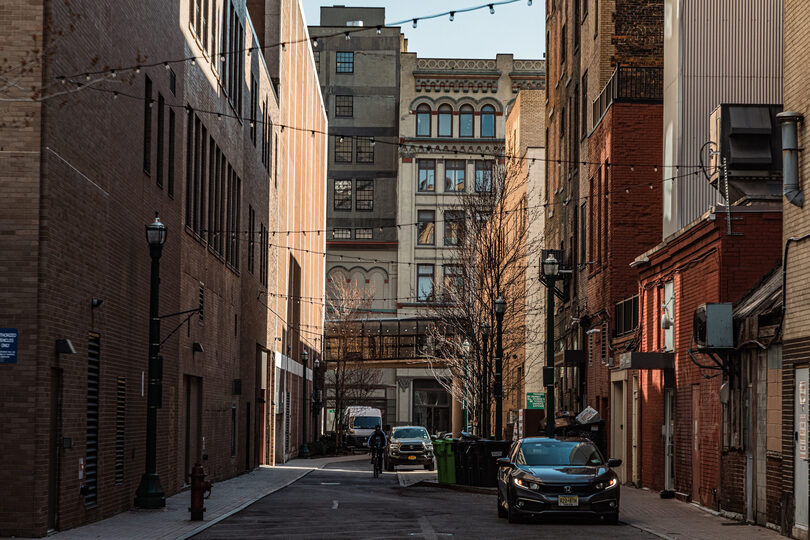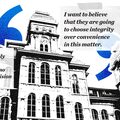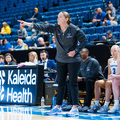Opinion: Homelessness in Syracuse sparks need for unconventional reform

Our columnist, like many, sees homelessness as a rising crisis in New York state. SU students must engage in less conventional community support to alleviate the symptoms of city neglect. Joe Zhao | Design Editor
Get the latest Syracuse news delivered right to your inbox.
Subscribe to our newsletter here.
The staggering rise in homelessness in Syracuse is a mounting crisis that can no longer be ignored.
Since 2021, the number of people experiencing homelessness in Onondaga, Cayuga and Oswego counties has surged by 150%, according to the Housing & Homelessness Coalition of Central New York. Even more troubling, family homelessness in central New York has jumped by a devastating 192% since 2019.
These numbers aren’t just statistics — they represent real people, families and children living without the basic dignity of stable shelter. This crisis highlights the stark difference between resources within Syracuse University and the surrounding city. Homelessness in Syracuse is a direct result of chronic underinvestment in the city.
As students and residents, we can’t afford to be passive in the face of this ongoing crisis. The city of Syracuse can’t let this problem get worse, and brushing it under the rug won’t mitigate its increasing prevalence.
Behind this rise lies a patchwork of complex, interconnected issues. About one-third of Syracuse’s residential properties show visible signs of deterioration. These are homes with issues such as failing roofs, inadequate heating, infestations or structural damage.
This housing crisis also contributes to a broader decline in the city’s quality of life. But unsafe, substandard housing shouldn’t be the only option for working families to stay off the street. As homelessness increases and properties fall into disrepair, entire neighborhoods feel the weight.
As a result, public spaces can become less safe and residents may feel increasingly isolated and anxious. The community’s social contract feels frayed as the downtown area becomes marked by closed storefronts, tent outcroppings and empty lots.

Cole Ross | Digital Design Director
One particularly impacted area is near SU. Despite the presence of a well-resourced institution, students and locals alike report feeling unsafe around campus. Muggings, assaults and property crimes have increased, particularly in poorly lit or less-monitored areas near campus.
SU receives substantial funding from alumni and charges a staggering cost of attendance. Yet much of this money is visibly funneled into flashy construction projects and athletic facilities rather than being reinvested in meaningful student outreach or initiatives to directly benefit the surrounding community.
While SU’s Student Government Association provides solutions to concerns about campus safety, and the university takes care to add emergency blue lights around campus, there still isn’t enough being done to relieve the city’s uneven development and misplaced priorities.
Syracuse and SU invest in projects like the “Green Loop,” a downtown beautification effort by Barton & Loguidice aimed at attracting businesses and residents through added greenery. While environmental improvements are worthwhile, they highlight a larger issue: resources are often funneled into aesthetic upgrades while urgent needs like housing, infrastructure and public safety in underserved neighborhoods go overlooked.
Instead, this funding should be reserved for affordable housing, upkeep on lead pipe replacement and access to quality public services in disinvested neighborhoods.
When students feel unsafe walking home at night, it speaks to broader issues of underinvestment, poor infrastructure and a widening divide between the university, its students and the city we call home.
This gap is illuminated at night as the boundaries between the well-lit, well-patrolled campus and surrounding community are in juxtaposition.
Last semester, a 76-year-old man was found dead on the fifth floor of Huntington Hall, an SU building many of us walk past daily. This tragic event highlights the disturbing proximity this crisis has to our campus.
As students, it’s easy to see a situation like this and feel defeated. But this attitude perpetuates the symptoms of community issues, and submitting to the belief that we’re powerless won’t enact change.
In fact, it highlights the need for new forms of community support. Though recent increase in cashless payment methods may make donating seem less convenient, new initiatives are on the rise to align with this adjustment. Cities across the country have experimented with QR-code donation stations, or virtual giving apps, where people can contribute to services instead of handing out direct cash.
Whether it’s donation codes in public areas or community fridges, we must rethink how we show up for those in need in a society that’s moved beyond spare change.
There’s always room for Syracuse’s wealthier institutions — like SU, major hospitals and other mass employers — to step up. Since these financial anchors benefit from tax breaks and positive public perception, they should reinvest in their local community by funding housing initiatives, supporting job training programs and partnering with local nonprofits.
This university, in particular, has the resources and influence to lead real change. The doubt lies in its willpower to do so.
Homelessness isn’t just a city problem — it’s a human problem. We need to look at homelessness not as a stain, but as a call to action. It’s not the fault of the people experiencing it. It’s the result of decades of policy failures, economic shifts and systemic social disconnection.
People experiencing homelessness aren’t strangers, but fellow Syracuse residents who’ve been failed by a system that too often ignores the most vulnerable.
The city stands at a crossroads. We can choose to look away and pretend this crisis is someone else’s problem. Or we can face it head-on as involved community participants with compassion, courage and collective resolve.
Addressing the crisis means investing in affordable housing, holding negligent landlords accountable, improving safety near our schools and finding new ways to give in a digital world.
Saimun Uddin is a senior majoring in aerospace engineering. She can be reached at sauddin@syr.edu.






